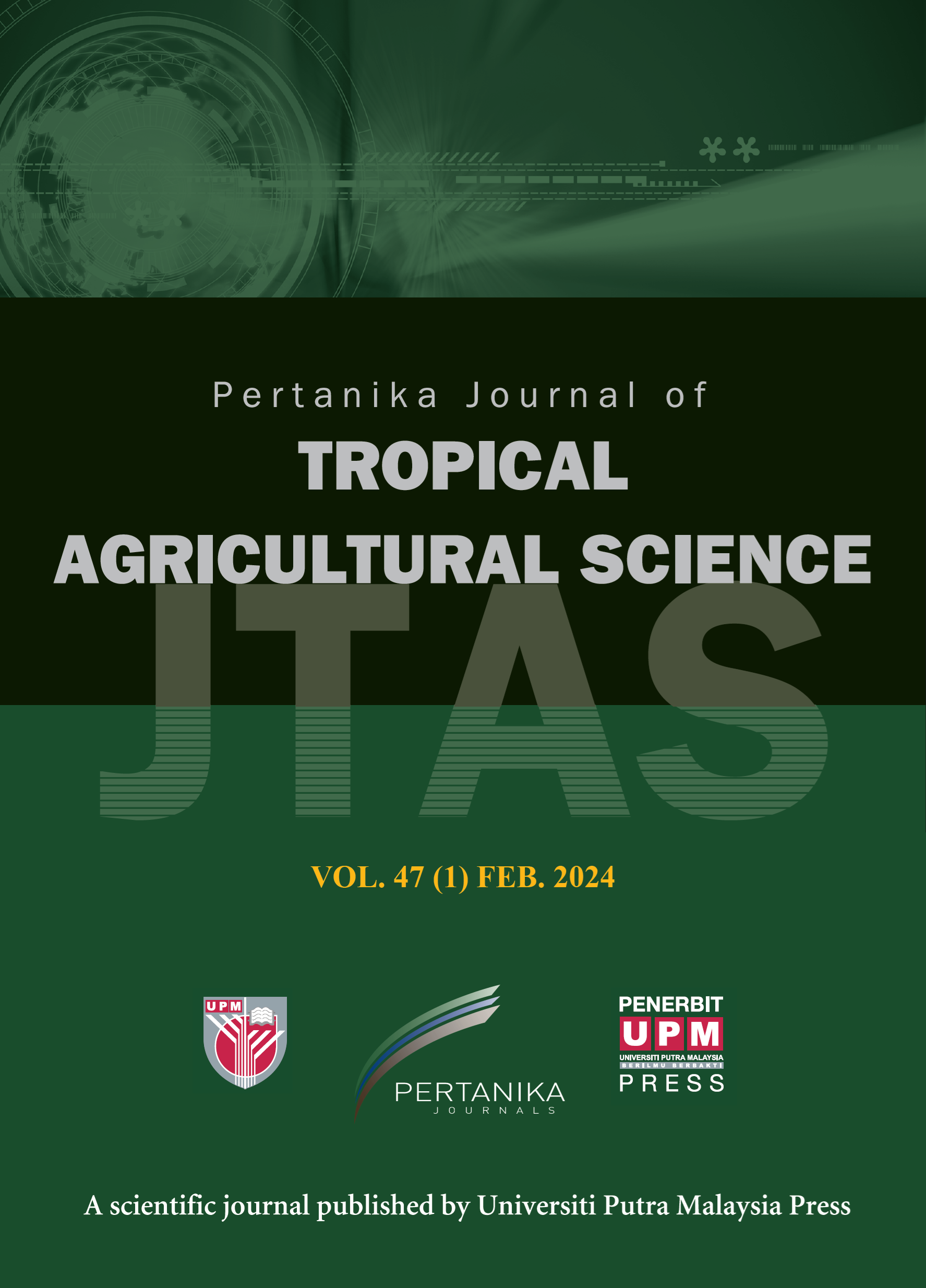PERTANIKA JOURNAL OF TROPICAL AGRICULTURAL SCIENCE
e-ISSN 2231-8542
ISSN 1511-3701
J
J
Pertanika Journal of Tropical Agricultural Science, Volume J, Issue J, January J
Keywords: J
Published on: J
J
-
Bailey, M., & Jamieson, A. A. (2017). Guest editors’ introduction: Palimpsests in the life and work of Octavia E. Butler. Palimpsest, 6(2), v-xiii.
-
Bostrom, N. (2003). The transhumanist FAQ: A general introduction (Version 2.1). 2003. World Transhumanist Association. http://www. nickbostrom.com/views/transhumanist.pdf
-
Bostrom, N. (2005). Transhumanist values. Journal of philosophical research, 30(Suppl.), 3-14. http://citeseerx.ist.psu.edu/viewdoc/download?doi=10.1.1.635.6455&rep=rep1&type=pdf
-
Bostrom, N. (2013, March 12). Transhumanism, Risk and the History of WTA [Video]. YouTube. https://www.youtube.com/watch?v=VmtrvkGXBn0
-
Butler, O. E. (2007). Lilith’s brood (includes Dawn, Adulthood Rites, Imago). Grand Central.
-
Dunkley, K. (2018). Becoming-posthuman: The sexualized, racialized and naturalized others of Octavia Butler’s Lilith’s Brood [Master’s thesis, Victoria University of Wellington]. http://researcharchive.vuw.ac.nz/
-
Hughes, J. (2004). Citizen cyborg: Why democratic societies must respond to the redesigned human of the future. Basic Books.
-
Kim, M. (2017). Afrofuturism, science fiction, and the reinvention of African American culture. Arizona State University.
-
Langer, J. (2011). Postcolonialism and science fiction. Springer.
-
Lavender III, I. (Ed.). (2014). Black and brown planets: The politics of race in science fiction. Univ. Press of Mississippi.
-
Mann, J. L. (2018). Pessimistic futurism: Survival and reproduction in Octavia Butler’s Dawn. Feminist Theory, 19(1), 61-76. https://doi.org/10.1177/1464700117742874
-
Melzer, P. (2006). Alien constructions. Science Fiction and Feminist Thought. University of Texas Press.
-
Mirenayat, S. A., Bahar, I. B., Talif, R., & Mani, M. (2017). Beyond human boundaries: Variations of human transformation in science fiction. Theory and Practice in Language Studies, 7(4), 264-272.
-
Pretzer, J. (2018). Survival of the fixed-est: Alien invasion of human identity in Octavia Butler’s Dawn. The Kabod, 4(2), 5. https://digitalcommons.liberty.edu/kabod/vol4/iss2/5/
-
Ross, R. R. (2017). Uncanny race and Octavia Butler. Western Tributaries, 4, 2. https://journals.sfu.ca/wt/index.php/westerntributaries/article/viewFile/48/26
-
Samatar, S. (2017). Toward a planetary history of Afrofuturism. Research in African Literatures, 48(4), 175-191. https://static1.squarespace.com/static/57718389725e25272beacd64/t/5f99913026cfeb07e10e0d19/1603899698260/Sofia+Samatar+reading+.pdf
-
Tucker, J. A. (2007). ‘The human contradiction’: Identity and/as essence in Octavia E. Butler’s’ Xenogenesis’ trilogy. The Yearbook of English Studies, 37(2), 164-181. https://www.jstor.org/stable/20479308?seq=1
-
Womack, Y. (2013). Afrofuturism: The world of black sci-fi and fantasy culture. Chicago Review Press.
-
Yaszek, L. (2015). Afrofuturism in American science fiction. In E. C. Link & G. Canavan (Eds.), The Cambridge Companion to American Science Fiction (pp. 58-69). Cambridge University Press. https://doi.org/10.1017/CCO9781107280601.007
-
Yoo, J. (2019). Transhumanist impulse, utopian vision, and reversing dystopia in Margaret Atwood’s Oryx and Crake and Octavia E. Butler’s Dawn. The Modern Language Review, 114(4), 662-681. https://doi.org/10.5699/modelangrevi.114.4.0662
ISSN 1511-3701
e-ISSN 2231-8542




